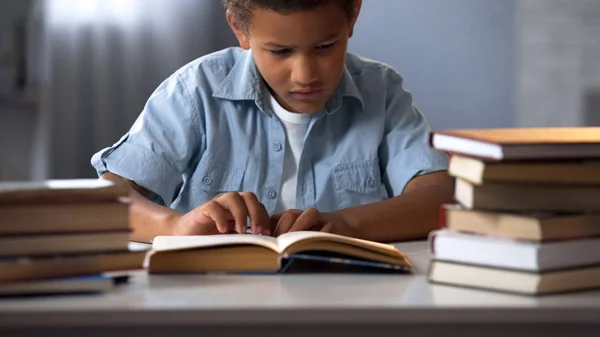Educational Programs for Juvenile Offenders: Analyze the effectiveness of educational programs aimed at rehabilitating juvenile offenders and reducing recidivism rates. Imagine a young person, filled with potential, caught in the throes of a mistake that landed them in the juvenile justice system. The path ahead can seem daunting, filled with uncertainty and the possibility of a future defined by their misstep. But what if there was a way to break the cycle, to equip them with the tools they need to not only avoid repeating their mistakes but to thrive? This is the promise of educational programs within the juvenile justice system.
In this article, I’ll be drawing on my experience as a crime educator and researcher to explore the power of education in reducing recidivism – the likelihood of a young person re-offending – and enhancing the rehabilitation of juvenile offenders. We’ll delve into the current landscape of juvenile delinquency, explore the limitations of traditional approaches, and illuminate the transformative potential of educational programs. By the end, you’ll gain a deeper understanding of how education can be the key to unlocking a brighter future for our youth.

The Alarming Prevalence of Juvenile Delinquency
Juvenile delinquency, the act of a minor committing an offense punishable by law, is a complex issue with far-reaching consequences. According to a 2021 report by the Bureau of Justice Statistics, an estimated 640,200 delinquency cases were petitioned in juvenile courts throughout the United States [1]. These numbers paint a sobering picture, highlighting the prevalence of this issue and its impact on countless young lives.
Education and the Delinquency Equation
The relationship between education and juvenile delinquency is undeniable. Studies have consistently shown that youth who are disengaged from school are more likely to engage in delinquent behavior [2]. A 2017 study by the National Center for Education Statistics found that the national dropout rate for students aged 16-24 was 5.9%, with significant disparities among racial and ethnic groups [3]. These statistics underscore the critical role that education plays in shaping a young person’s path. When educational opportunities are limited or unmet, the risk of delinquency rises.
Understanding Juvenile Delinquency: A Spectrum of Offenses
It’s important to understand that juvenile delinquency encompasses a range of offenses. Here’s a breakdown of the three main classifications:
- Status offenses: These are acts that are only illegal because the person committing them is a minor, such as running away from home or violating curfew.
- Delinquent acts: These are acts that would be considered crimes if committed by an adult, such as theft, vandalism, or assault.
- Dependency: This refers to situations where a minor is neglected, abused, or otherwise in need of protection from the state.
Beyond Punishment: The Rehabilitation Model
Traditionally, the juvenile justice system has focused on punishment as a deterrent to future offenses. However, a growing body of research indicates that the rehabilitation model, which prioritizes addressing the root causes of delinquency and equipping youth with skills for positive change, is far more effective. Educational programs are a cornerstone of this approach.
The Limitations of Retribution
While punishment may serve as a deterrent in some cases, it often fails to address the underlying issues that contribute to delinquency. Simply isolating young people from society without providing them with the tools they need to succeed can exacerbate existing problems and increase the likelihood of recidivism.
Imagine a young person who commits a crime due to feelings of isolation or a lack of positive role models. Placing them in a secure juvenile detention facility may provide temporary security, but without addressing the social and emotional factors that led to their actions, they are more likely to re-offend upon release.
Restorative Justice: Repairing Harm and Building Bridges
Restorative justice programs offer a promising alternative to traditional punitive approaches. These programs focus on repairing the harm caused by the offense and fostering reconciliation between the offender, the victim, and the community. Educational programs can play a vital role in restorative justice by equipping young people with the skills necessary for effective communication, conflict resolution, and empathy.
For instance, a restorative justice program might involve a juvenile offender who has vandalized property meeting with the owner to discuss the impact of their actions and participating in a community service project to make amends. These types of programs can be transformative, fostering a sense of accountability and responsibility while promoting positive social interaction.
Evidence-Based Treatment Models: Keys to Success
The effectiveness of educational programs lies not just in their content but also in their approach. Evidence-based treatment models that have been rigorously tested and shown to reduce recidivism are crucial. Here are some of the most effective models currently in use:
- Cognitive-behavioral therapy (CBT): CBT helps young people identify and challenge negative thought patterns that contribute to delinquent behavior. By learning to recognize and reframe these thoughts, youth can develop healthier coping mechanisms and make more positive choices. A 2019 meta-analysis of 71 studies found that CBT was effective in reducing recidivism among juvenile offenders [4].
- Multisystemic therapy (MST): MST is an intensive family-based therapy program that addresses the complex interplay of factors that contribute to delinquency. MST therapists work with youth and their families to improve communication, address conflict resolution skills, and strengthen family bonds. A 2011 study published in the Journal of Consulting and Clinical Psychology found that MST significantly reduced recidivism rates among high-risk youth [5].
- Functional family therapy (FFT): Similar to MST, FFT focuses on improving family communication and resolving dysfunctional family dynamics that can contribute to delinquency. Through guided discussions and role-playing exercises, families learn to express their needs effectively, resolve conflict in a healthy manner, and create a more supportive environment. A 2017 review of research on FFT concluded that it is a highly effective intervention for reducing recidivism among juvenile offenders [6].
Educational Programs in Action: Breaking the Cycle of Recidivism
Now, let’s delve into how educational programs, when aligned with evidence-based treatment models, can create a powerful force for positive change. Here are some key ways educational programs can contribute to reducing recidivism:
- Addressing Academic Deficits: Many juvenile offenders struggle with academic challenges. Educational programs within juvenile justice facilities provide opportunities to catch up on missed coursework, obtain a high school diploma or GED, and develop essential literacy and numeracy skills. These skills not only enhance self-esteem and a sense of accomplishment but also equip youth for future employment and educational opportunities.
- Developing Life Skills: Educational programs can go beyond core academic subjects by providing young people with valuable life skills. Programs might focus on topics such as financial literacy, anger management, healthy relationships, and job readiness skills. By equipping youth with these tools, they are better prepared to navigate the challenges of life outside the juvenile justice system.
- Promoting Social and Emotional Learning (SEL): SEL programs are designed to help young people develop self-awareness, social awareness, relationship skills, responsible decision-making, and self-management skills. These skills are crucial for success in all aspects of life, including preventing future delinquency. Studies have shown that SEL programs can be effective in reducing recidivism among juvenile offenders [7].
- Fostering Creativity and Hope: Educational programs can also provide a much-needed outlet for creativity and self-expression. Art, music, and vocational training programs can spark a sense of purpose and hope, allowing young people to explore their interests and discover their talents. This can be transformative, fostering a sense of self-worth and motivation to build a positive future.
Challenges and Opportunities: Investing in Education for Rehabilitation
Implementing effective educational programs within the juvenile justice system is not without its challenges. Limited resources, high staff-to-student ratios, and the complex needs of the youth population can create obstacles. However, these challenges also present opportunities for innovation and collaboration.
- Technology as a Tool: Technology can be a powerful tool for enhancing educational opportunities within juvenile justice facilities. Online learning platforms, computer-assisted instruction programs, and virtual reality simulations can provide students with access to a wider range of courses and learning styles.
- Community Partnerships: Collaboration with local schools, community colleges, and vocational training programs can offer valuable resources and expertise. Partnerships can help ensure that educational programs within juvenile justice facilities align with the curriculum offered in traditional schools, facilitating a smoother transition back into the mainstream educational system upon release.
- Investing in Staff Training: Investing in training for staff working with juvenile offenders is crucial. Staff who are equipped with the knowledge and skills to implement evidence-based treatment models and create a positive learning environment can make a significant impact on the success of educational programs.
Conclusion: Education – The Key to Unlocking Potential
By prioritizing education within the juvenile justice system, we can unlock the potential for a brighter future for our youth. Educational programs that are aligned with evidence-based treatment models, address academic and social-emotional needs and foster creativity and hope can be transformative. Investing in these programs is not just about reducing recidivism; it’s about investing in the future of our communities.
Also Read | The Crime Education Statistics in Schools – Role of the School in Educating Students about Crime

